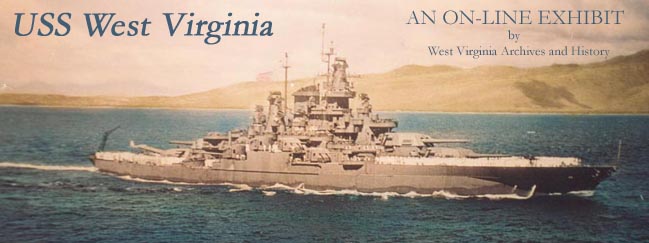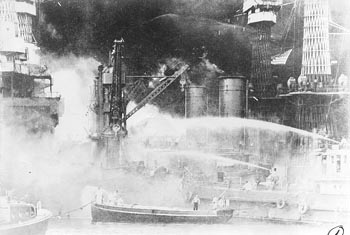

On December 7, 1941, the West Virginia lay moored at Pearl Harbor with forty feet of water beneath her keel. Shortly before 0800, Japanese planes commenced their surprise attack on the American fleet. More than 2,000 Americans died in the attack, which led the United States into World War II.
| The West Virginia was hit by seven 18-inch aircraft torpedoes and two bombs, which were actually 15-inch armor-piercing shells fitted with fins. The ship began to list dangerously, but Lieutenant Claude V. Ricketts began counterflooding, and his prompt action prevented the West Virginia from capsizing. A short time later the great battleship sank, settling to the bottom on an even keel. The ship's crew valiantly fought fires while the wounded were evacuated. After more than an hour, however, the ship was abandoned. Volunteers returned and continued to fight the blazing flames raging aboard the ship. The garbage lighter YG-17 gallantly pulled alongside despite the danger posed by exploding ammunition. |
| The great conflagration continued for nearly thirty hours, and extensive damage was done to the ship. Two officers and one hundred and two men lost their lives as a result of the attack. As the year came to a close, many thought the battleship West Virginia was finished. |  |